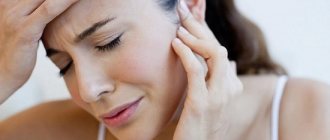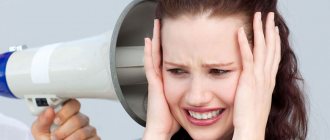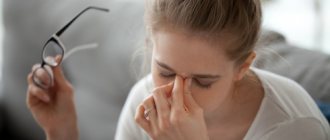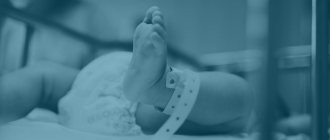The sensation of crawling on the scalp is possible if the conduction of nerve impulses is disrupted. Sometimes this happens when nerve endings are irritated. If the small subcutaneous muscles that are attached to the hair follicle contract, the person will feel a tingling sensation running through their head. This unpleasant symptom is called paresthesia. This phenomenon can also occur with goose bumps.
Description of the phenomenon
Goosebumps appear when nerve endings in the spinal cord or brain are irritated. The reason is the stimulation of individual nerves, which has such an effect on their endings. The irritation causes muscle contraction, causing a sensation as if the hair on the head has risen, and tiny bugs have begun to run across the skin itself. This phenomenon can affect not only the head, but also any other part of the body where there is at least a little hair.
Goosebumps can be one-time (temporary). In this case, they appear for completely natural reasons in a healthy person. Sometimes they can be combined with seizures, loss of sensation, dizziness, but no medical intervention or medication is required. Goosebumps appear for the following reasons:
- Emotional arousal (joy, surprise, fear);
- Touching sensitive skin;
- Low air temperature, hypothermia;
- High body temperature;
- Poor health (weakness, fatigue, headache).
When such sensations appear under the conditions listed above, there is no need to worry. After some time, the goosebumps will disappear on their own, and not a trace will remain of the unpleasant feelings.
Sometimes goosebumps may appear during sexual arousal. Humans experience this much less frequently than most living beings.
Features of symptoms in women
Advertising:
If goosebumps appear on the head in women, the reason may lie in the hormonal changes in the body that occur during menopause. Symptoms of paresthesia can occur at any stage of the menopause, but they are more pronounced in the premenopausal and menopausal phases, when hormonal surges are most active.
Provoking factors that cause sensitivity disorders in women include vitamin deficiency. The feeling of goosebumps occurs when there is a lack of elements such as:
- vitamins A, D, E, C and B vitamins (cyanocobalamin, folic acid);
- trace elements zinc, copper, iodine.
If the content of useful substances in the body is low, especially during pregnancy, dry skin, dizziness, general weakness and sensitivity disorders of the skin may occur.
Causes associated with pathologies
Goose bumps on the head can be chronic. They are caused by the development of various diseases and are almost always combined with other more serious symptoms. The frequency and regularity of manifestations depend on what particular pathology caused them. In the most dangerous diseases, convulsions, tingling and numbness of the skin appear in damaged areas, sensitivity is lost, temperature is disturbed, and hair falls out.
What diseases can cause goosebumps:
- Osteochondrosis of the cervical spine. Curvature, combined with constant compression of nerve endings, is one of the most common causes of goosebumps. The patient may also feel slight numbness, dizziness, pain in the neck, head and torso, and tingling. If left untreated, symptoms will accompany the person throughout his life.
- Cardiovascular diseases. Most diseases associated with the heart or blood vessels cause many unpleasant symptoms. Patients may have a numb head, they often feel crawling, pain inside the skull, weakness, nausea, their skin becomes paler, their mood and general well-being worsen. Sometimes symptoms can affect the head only on one side, and also “give” to certain parts of the face and arms.
- Micro stroke. If a micro-stroke occurs, the patient’s brain cell nutrition will be disrupted. In this case, the serious symptoms inherent in a regular stroke will be absent. Everything is limited to goosebumps that appear for a short time, painful sensations inside the head, weakness, and dizziness. A microstroke is also called a transient ischemic attack.
- Hypoparathyroidism. The disease is combined with functional disorders of the parathyroid glands, which cause goose bumps on the scalp, very strong nervous excitability, and numbness in the limbs. If left untreated, complications may develop that cause increased symptoms.
- Atherosclerosis. Vascular damage that occurs with this disease can cause chronic goosebumps, pale skin, memory loss, and the formation of small ulcers. There are frequent cases of complications of the disease in the form of acute vascular insufficiency of the brain, which can lead to death.
- Cervical plexus neuropathy. A pinched nerve often occurs against the background of severe curvature of the spine, but this is not a prerequisite for such a phenomenon. If this happens, the person will feel like there are goosebumps running all over the head, and there will also be severe pain radiating to the back of the head, neck, shoulders and the bone behind the ear.
- Neuropathy of the greater occipital nerve. With this disease, damage occurs to the nerve in the back of the head. The patient's skin will become numb and the sensitivity at the back of the head will decrease. Sometimes he may feel tingling in certain areas of the skull.
- Bell's palsy. This name refers to inflammation of the facial nerve, in which goose bumps begin to run on one side of the face, affecting the upper part of the head. Along with this sensation, weakening of the muscles in certain parts of the face may occur. In some cases, the muscles stop working completely, which requires serious medical supervision.
- Avitaminosis. A lack of vitamins leads to a deterioration in the health of the skin, due to which it begins to peel, crack, and a person experiences a burning sensation, itching, is faced with decreased immunity, pain in the back and head, weakness throughout the body, and bad mood.
- Hypoxic conditions. Lack of oxygen occurs when you spend a long time in a stuffy room, as well as when there are disorders in the brain. In both cases, the person will have a crawling sensation in the head, as well as severe pain affecting one temple, the back of the head, the forehead, or one side of the brain. Often the cause of mild hypoxia is vegetative-vascular disorders, as well as a sympatho-adrenaline crisis against the background of VSD, which causes vasoconstriction, causing a full range of unpleasant symptoms.
- Nervous and mental disorders. With various deviations in a person’s mental state, sensations may appear as if bugs began to crawl on the head, dizziness, weakness, headaches, and discomfort in the stomach. Also, as a rule, there are also psychological symptoms, expressed by increased nervousness, moral instability, bad mood, lack of interest in life, and excessive aggression towards others. All this can appear even with regular overwork or stress.
- Cold. ARVI, acute respiratory infections or influenza are always combined with weakness, runny nose, nasal congestion, sore throat, cough, and high body temperature. Some people experience crawling sensations all over their head. Sometimes complications develop, for example, sinusitis. It causes the same goosebumps, as well as severe pain in the forehead, bridge of the nose and temples, which intensifies when turning the head. A person in this condition should definitely call an ambulance.
- Climax. During menopause, women face vascular disorders accompanied by unstable blood pressure. For this reason, they may experience crawling sensations, a headache, numbness in their limbs, and a convulsive syndrome. In some cases, menopause is accompanied by digestive problems, which cause constipation, bloating, colic, vomiting, heartburn, belching, and increased gas formation.
The regular occurrence of goose bumps, combined with other serious symptoms, requires a medical examination. This is the only way to be sure of the presence or absence of any diseases. If the symptoms seem particularly dangerous, you should immediately call an ambulance to eliminate all possible risks.
Characteristics of the symptom
Goosebumps is a comparative description of a sensation that is similar to a slight tingling, tightening, or moving of the skin. In medical terminology, this phenomenon is called paresthesia. It arises as a response to irritating factors of an endogenous and exogenous nature.
Paresthesia can be either episodic or chronic, depending on the triggering agents.
The symptom is a type of sensory disorder and has several characteristic features.
The following properties of pathology are distinguished:
- wave contraction of the middle layer of skin (dermis), with changes in sensitivity;
- spontaneous occurrence of sensations, without a specific chronological periodicity;
- the duration of the episodes increases, depending on the worsening of the provoking factors.
As the symptoms increase, the goosebumps may spread to the cervical spine, upper and lower extremities, or enter a more severe phase, which is accompanied by numbness and soreness of the skin.
When the kidney has abnormal mobility and falls below the diaphragm, the patient suffers from pain in the hypochondrium and lower back. Nephroptosis begins to develop, which should be treated immediately, preventing the development of complications and inflammation. Read more in the article: “kidney prolapse: treatment, causes and consequences.”
Features of the symptom
Advertising:
In some cases, paresthesia is of a reflex nature and is called the pilomotor reflex or piloerection. The condition occurs in response to a pronounced emotional outburst, which can be caused by the following emotions:
- joy;
- fear;
- sexual arousal and other feelings.
In addition to the causes of the emotional spectrum, pilomotor paresthesia can be triggered by a feeling of cold, a reaction to anti-stress toys, or unexpected sounds (grinding metal, creaking foam). The effect can also be caused by dosed physical activity and massage, even if a simple hand massager is used.
Piloerection is a rudimentary reflex and is not a sign of disease.
The origin of this reflex is the stimulation of peripheral nerve endings and is manifested in the contraction of smooth muscle of conical connective tissue fibers. As a result of the contraction of the hair follicles, the hairs rise and the “goose bumps” effect is observed. The mechanical movement of the skin is accompanied by the sensation of goosebumps running over the head.
Syphilis is an infectious disease caused by Treponema pallidum and is sexually transmitted. The initial symptom of a syphilitic infection is a hard chancre that appears at the site of entry of the pathogen. Read more in the article: “syphilitic infection: symptoms and signs.”
Visit doctor
With occasional goosebumps, there is no reason to worry. However, if you suspect the development of other diseases, you should still think about visiting a doctor. Therefore, you need to know what exactly may indicate serious illness. But no less important is the diagnosis itself, which includes several procedures.
When to visit a doctor
Many people choose to turn a blind eye to minor sensations, which is why they face serious complications. It is very important to promptly notice changes in your body and go to the hospital. You should go to the doctor under the following conditions:
- Symptoms are episodic and last for more than an hour.
- Pain in the head, dizziness, and increased blood pressure appear.
- During an attack, problems with vision, speech or hearing occur.
- It becomes difficult to turn your head.
- The skin changes with each attack.
Even one point is enough to make an appointment now. It is better to get examined and make sure there are no diseases than to risk your health.
Adults should be very attentive to their children. If your child complains of a crawling sensation in his head, you should take him to the doctor. This is especially true in cases where the child’s behavior has changed dramatically.
Diagnostics
The first doctor a patient visits should be a neurologist. It is he who will prescribe all the necessary examinations, and also refer you to other specialists, if necessary.
What procedures will you need to undergo:
- General blood and urine analysis;
- Blood chemistry;
- X-ray of the cervical spine;
- CT, MRI of the brain;
- ENMG;
- ECG, ECHO ECG;
- EEG;
- RVG;
- Ultrasound, Doppler ultrasound.
After all the studies have been completed, the doctor will make a final diagnosis and prescribe the necessary treatment. In some cases, constant monitoring of the patient may be required, for which he will be admitted to the hospital.
Significance in diagnosis
Symptoms, accompanied by a feeling of goosebumps running in the head, have important diagnostic significance. Such manifestations mean that a pathological process is occurring in the body, which may be a consequence of the following factors:
- disruption of the innervation of the neck, head and brain;
- problems with blood circulation;
- hormonal disorders;
- consequences of mechanical damage.
Paresthesia is also of differential importance in the diagnosis of mental disorders.
The benefit of goosebumps is the possibility of early diagnosis. Making a diagnosis at an early stage allows you to avoid the development of acute life-threatening conditions (vascular obliteration, stroke). Since paresthetic effects appear in the first stages of the pathological process, timely treatment helps prevent chronic disease.
Treatment
Treatment options depend on what is causing the problem. If the doctor has made a diagnosis, then you should take a course of the medications that he prescribes. Only getting rid of the root cause will allow you to forget about unpleasant symptoms forever. The treatment itself includes two methods of influencing the body: medicinal and folk. They can be used simultaneously if there are no contraindications.
Drug treatment
Only the attending physician can prescribe medications. It is highly not recommended to purchase and take medications on your own, because... This can cause irreparable harm to your health.
Your doctor may prescribe the following types of medications:
- Sedatives (Glycine, Motherwort, Valerian). Calms the nervous system.
- Antihypoxants (Mexidol, Preductal). Reduce the risk of developing hypoxia.
- Vasodilators (Cavinton, Nicergoline). Improves blood circulation.
- Angioprotectors (Ginkgo-Biloba, Ascorutin). Tones the veins and blood vessels in the head.
- Preparations with vitamin B (Thiamin, Pyridoxine). Improves the quality of nerve tissue.
You can only take mild sedatives (Valerian, Glycine) and painkillers (Nurofen, Paracetamol) on your own. However, it is important to consider the dosage and also try to see a doctor as soon as possible.
You can also be treated with non-drug means. Some patients are prescribed massage, magnetotherapy, peloid therapy, therapeutic exercises, and electric shock. Also, to increase effectiveness, you may need to adhere to a daily routine, quality sleep and a light diet.
Sometimes the reason why you get goosebumps is the medications themselves. For example, they can be caused by Naphthyzin, which is used to relieve nasal congestion.
Traditional methods
You can cope with goosebumps at home using traditional methods. They will improve the general condition of the body, after which all unpleasant symptoms will disappear. To do this you will need to use the following recipes:
- Parsley root, flax seeds, pumpkin leg, lilac and chicory flowers, horseradish, dandelion, watermelon rinds - take 2 tbsp. l. and pour 300 ml of boiling water. Let it brew. Take 50 ml every morning and evening.
- Nettle leaves, lingonberries, clover, dill, mint, echinacea - mix all ingredients 2 tbsp. l. and pour 500 ml of boiling water for half an hour. Take 50 ml at night.
It is important to drink the first tincture first, and only then the second. Additionally, you can drink tea with mint or lavender, because... they have a relaxing effect.
Features of manifestation
Symptoms such as cloudiness, dizziness, heaviness, a feeling as if the head is in a fog, can accompany a person constantly or appear several times a week.
This condition does not always mean that a person has any disease. Often these signs arise due to the influence of certain factors: changes in weather conditions, excessive physical exertion, lack of sleep, mental work, etc.
The main feature of the brain fog symptom is its sudden appearance. So, a person who felt good a minute ago, almost in an instant feels discomfort, fogginess, dizziness, blurred vision, dullness of consciousness.
The problem is that these symptoms can appear in the workplace or while performing an important task. Due to this, a person is deprived of the opportunity to carry out usual activities.
Brain fog is often accompanied by various symptoms:
- increased or decreased blood pressure;
- drowsiness during the day and sleep disturbance at night;
- weakness;
- headache;
- strong heartbeat;
- excessive sweating, etc.
Often this picture is accompanied by a feeling of unreasonable fear, a feeling of lack of air, and the appearance of a ringing in the head. There are many reasons for this condition.
Types and mechanism of goosebumps
The sensation of tingling and crawling is medically called “paresthesia.” They appear in response to irritation of nerve endings, the brain or spinal cord. The nature of this phenomenon is as follows: the sensitive nerve ending receives several different unrelated signals at once, layering on top of each other. As a result, the nerve does not know how to react correctly to this variety, and “turns on” numbness, burning, “pins and needles” or tingling.
Paresthesia is usually felt below the irritated area of the nerve. They may be accompanied by “goose bumps” - “pimples” in the area of hair growth, which is an analogue of the puffiness of fur or quills in animals.
Paresthesias can be:
- temporary, occurring when sitting in an uncomfortable position, freezing, sexual arousal, a feeling of euphoria from listening to music or when negative emotions appear. They are usually described as “pins and needles on your legs” and go away when the irritating factor stops. Not accompanied by cramps, pain or sensory disturbances;
- chronic, recurring. They are signs of the disease, and can be accompanied by two types of symptoms:
- indicating damage to the nerve fiber. These are: numbness in the limbs or only in the fingers, tingling sensation, goosebumps. Sometimes local twitching (convulsions) develops here;
- indicating damage to those nerves that are connected to the vessels of this area. This is evidenced by: pale skin, deterioration of temperature and pain sensitivity, cool temperature, hair loss.
Transient (temporary) paresthesia is a variant of the norm and does not require medical intervention. If “goosebumps” run without any visible effect on the skin, you definitely need to look for their cause and eliminate it.
Treatment and the safest drugs
In order not to ignore the strange sensation in the head, first of all you need to think about pressure. After the measurement is made, drugs are used that normalize it. A slight deviation from normal indicators can be corrected. For example, if it is low, then use ginseng tincture, a cup of coffee or a piece of chocolate, and if it is high, a glass of green tea with chokeberry jam, and, in addition, hawthorn tincture, will do. When it differs significantly from the usual, then the use of medications is required.
Medicines “for blood pressure” and “for blood pressure” have an individual effect on the body, and it takes some time to select “your medicine.” When you finally manage to find such a drug, the strange sensation in your head will definitely not bother you.
If unpleasant symptoms bother you periodically, and a person’s blood pressure is stable, then antispasmodics will help eliminate the discomfort. Massage helps relieve dizziness, which you can easily learn to do on your own. This effect should begin to be performed from the neck, gradually rising up the back of the head directly to the crown.
What else can you do? It is necessary to be in the fresh air as much as possible, doing special exercises for the neck, and also swim in the pool. All these measures are aimed at improving blood flow in the cervical spine.
What to pay attention to
If you regularly experience a tingling sensation in the right or left side of your head, you need to pay attention to the accompanying symptoms. These include visual and hearing impairment, dysphagia (swallowing disorder), speech dysfunction, dizziness, imbalance, nausea and vomiting, and persistent sleep disturbance. Many of the symptoms listed indicate the presence of a disease.
To find out what gives you goosebumps, you need to make an appointment with a doctor. There are many diseases and conditions that lead to sensitivity disorders. Having found out the causes of the disorders, the correct treatment can be prescribed.
328
What to do if you have goosebumps on your head
You should not immediately panic if goosebumps appear on your head, because this is most likely a natural reaction of the body to a psycho-emotional state or external influence. In this case, the sensation will quickly pass and will not be systematic. If the origins lie in increased excitability of the nervous system, then you can take mild sedatives - for example, Glycine, mint tea or aromatherapy with mint or lavender oils. A massage of the back and neck will improve your overall well-being, because often headaches, irritability and increased nervous sensitivity are a consequence of the accumulation of salts in the cervical region.
A person's attention should be drawn to the pathologically frequent appearance of goosebumps and their presence for a long time. In this case, most likely the problem lies in the presence of a disease, which cannot be determined without a visit to the doctor and a series of examinations.
It is worth considering that symptoms similar to osteochondrosis (headache, irritability, etc.) can also develop with deviations in the normal functioning of the thyroid gland. Consultation with a specialist is necessary if you have the following symptoms:
- numbness and goosebumps do not stop for more than an hour;
- along with goose bumps on one part of the head, its immobilization is observed;
- Along with goose bumps, there is pain in the head and high blood pressure;
- the condition is accompanied by functional disorders (hearing, vision, etc.);
- in the goose bump area there is a change in skin temperature and it turns red.








